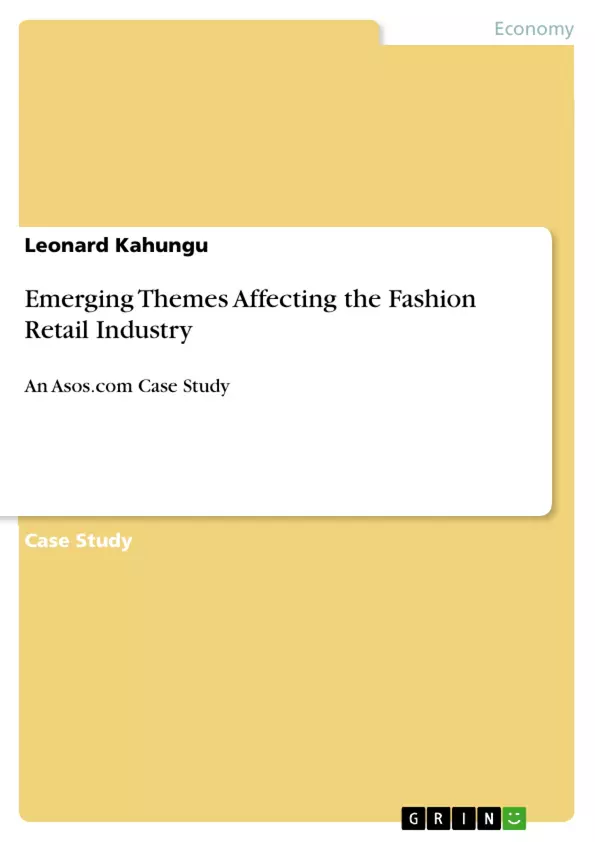This paper seeks to review the asos.com case in attempts to critically evaluate various themes affecting the fashion industry in the contemporary environment.
The findings will be used to establish various strategies that will continue to affect the fashion industry in the next five years. Lastly, the report will develop several recommendations based on the inferences obtained from the critical evaluation and analysis of the asos.com case study.
Most industries have experienced radical changes in the last few decades as a result of emerging themes commercial undertakings. Particularly, the fashion retail industry has also experienced radical changes due to emerging issues.
Inhaltsverzeichnis (Table of Contents)
- Introduction
- Critical Evaluation of the Case Study
- Critical Discussion
- Demographic Changes, Social Trends and Shifts
- Legal Transformations and Global Economic Issues
- Technological Advancements
- Industry Globalisation
- Critical Evaluation
- Recommendations
- Conclusion
- References List
Zielsetzung und Themenschwerpunkte (Objectives and Key Themes)
This paper aims to analyze the asos.com case study in order to critically evaluate various themes impacting the fashion industry in today's environment. By examining asos.com's growth and strategies, the paper will identify key trends affecting the fashion industry over the next five years and propose recommendations for future success.
- The rise of e-commerce in the fashion retail industry
- Shifting consumer preferences and the importance of convenience and technological sophistication
- Demographic changes and social trends influencing consumer behavior
- Technological advancements and their impact on the fashion retail landscape
- The impact of globalisation on the fashion industry
Zusammenfassung der Kapitel (Chapter Summaries)
The introduction provides an overview of the paper's objectives and the case study of asos.com. Chapter 2 delves into a critical evaluation of the asos.com case study, highlighting its growth trajectory and the emerging themes that have influenced its success. It specifically focuses on the evolution of e-commerce and the company's strategic response to changing consumer demands.
Chapter 3 presents a critical discussion of various themes impacting the fashion industry, including demographic changes, social trends, legal transformations, global economic issues, technological advancements, and industry globalisation. This chapter explores how these themes have shaped the industry and continue to influence its future.
Chapter 4 offers a critical evaluation of the insights gained from the case study and the critical discussion. It examines the implications of the identified themes for the future of the fashion industry. Chapter 5 presents recommendations based on the analysis, outlining strategies that can be implemented to navigate the evolving landscape of the industry.
Schlüsselwörter (Keywords)
The key themes and concepts explored in this paper include e-commerce, online fashion retail, consumer behavior, demographic trends, technological advancements, globalisation, industry transformation, strategic management, and business growth.
- Citation du texte
- Leonard Kahungu (Auteur), 2018, Emerging Themes Affecting the Fashion Retail Industry, Munich, GRIN Verlag, https://www.grin.com/document/428643



